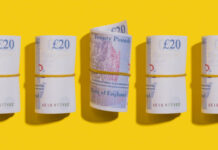We expect the Fed to maintain the Fed funds target range at 1.00-1.25% at this week’s meeting, in line with consensus and market pricing. As it is one of the small meetings, all eyes are on the statement, as there are no updated projections and no press conference.
Given the Fed seems to act only at the big meetings, we think the Fed will wait until September to make an announcement on ‘quantitative tightening’, despite many FOMC members thinking they should get going ‘relatively soon’.
We do not think there will be major changes to the FOMC statement, although it is likely the probability is skewed towards a slightly more dovish tone given inflation has now been weaker than expected for four consecutive months. Based on Janet Yellen’s recent testimony to US congress, the Fed still has faith in the Phillips curve, i.e. the tighter labour market will push wage growth and thus underlying inflation higher eventually. However, in our view, the jobs report for June highlighted the Fed’s dilemma.
Due to the Fed’s strong belief in the Phillips curve and given we expect further tightening of the labour market, we think the Fed will hike one more time this year in December. We still think risks are skewed towards the Fed pausing its hiking cycle due to low inflation, which may not be just ‘transitory’ given the low inflation expectations. In our view, the problem is that the tightness of the labour market is not the only factor determining wage growth, as second-round effects after many years with low inflation have hit wage growth. When employees expect inflation to remain low, they can live with low wage growth, as real wage growth may still be solid, making it less likely inflation will reach the target. In this regard, it is interesting that four FOMC members indicated that they do not expect the Fed to hike more this year in the June projections. Consensus is for another hike this year, while markets price in a coin flip.
EUR/USD has gained significantly over the past month, as both ECB communications and the balance of political risks have shifted in favour of the euro. In our view, Mario Draghi and the ECB have already let EUR/USD out of the bottle – and basically paved the way for a continued correction in the FX market of some of the long-standing undervaluation in EUR/USD. See FX Strategy: ECB has let EUR/USD out of the bottle (29 June) for details. We expect these dynamics to remain key drivers for the cross in the near term, while relative rates (FOCM pricing) are likely to matter less (this was also evident last week when EUR/USD continued higher post the ECB’s press conference despite EUR interest rates trading lower). Fundamentally, EUR/USD is still undervalued and we still see the case for a higher EUR/USD six to 12 months ahead. We are currently reviewing our EUR/USD forecast, stressing that we see risks skewed mainly on the upside relative to our 6M and 12M targets of 1.15 and 1.18, respectively.

















